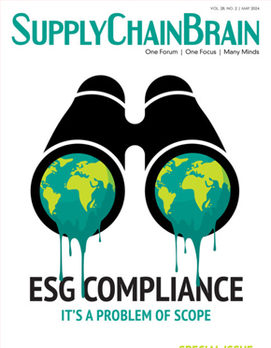
Interest in contract lifecycle management (CLM) software is surging in the wake of last year’s unprecedented disruptions, which exposed how critical real-time access to contract data should effectively respond to emerging risks and opportunities.
According to a recent Forrester survey, “CLM has universally gone from a nice-to-have to a critical-to-have in a post-COVID world.” This isn’t surprising, considering estimates by World Commerce & Contracting that inefficient contract management costs companies more than 9% of total annual revenue.
Contracts are the foundation of every commercial relationship. An effective contract management system can help companies reduce costs and speed time to market, all while ensuring compliance and minimizing risk. Yet, as with all technology, there are key decisions that will determine the value an organization realizes from deploying a CLM system.
Following are five steps that a company should take to ensure a successful CLM implementation.
Lay the groundwork. It’s often said that “a failure to plan is a plan to fail.” Any successful technology deployment begins with careful planning and a clear understanding of the impact the new solution will have on the business. Because contracts represent multiple stakeholders across geographies, from procurement and sales to legal and I.T., an organization needs to be thoughtful about who is included in the CLM selection, implementation, and scaling process. Each division within the organization has a different perspective on CLM. The more buy-in an organization initially has in the process, the more likely it is to invest in the right choice and the easier it will be to scale future contract management capabilities as the company grows and business needs evolve.
Companies also need to understand current contract processes to anticipate how a CLM system will impact workflows before investing in it. Evaluating contracting across the organization will help uncover inefficient contracting workflows that a CLM system can quickly solve. Conversely, it also reveals areas where contracting processes are highly complex or low-volume. It’s advisable to wait until the solution is scaled to address these areas.
Organizations can then begin to define what success looks like and set goals for improvements stakeholders want to see. Benchmarking key performance indicators (KPIs) such as contract turnaround time, and reporting out improvements in key contract management areas, help build confidence in the system. Additionally, creating realistic stage gates with discrete milestones for the CLM journey helps keep implementation teams on track, and ensures all parties are aligned with the progress.
Select the right technology. As with any technology purchase, organizations should consider a CLM system an investment. That means it should offer capabilities that address a company’s immediate needs, while also including advanced technologies such as artificial intelligence and blockchain to ensure the system can address a company’s growth and future requirements.
But it’s more than just the technology itself; organizations should look for a CLM provider that can serve as a trusted adviser and partner. Even the best software serves little value if it’s too difficult to use, or doesn’t deliver the necessary results to secure stakeholder confidence. Choosing an experienced CLM partner with a proven track record of quick and successful implementations can help companies achieve a speedy return on investment.
Contracting is the latest frontier that organizations are tackling in their digital transformation journey. As such, it’s vital for companies to evaluate and look for a CLM provider that’s continuing to invest in its offering, and that these technologies seamlessly integrate with existing enterprise systems across the organization to optimize operations and accelerate business.
Invest in training. It doesn’t matter how advanced a technology tool is, or how revolutionary its impact will be on the business, if no one uses it. This should remain front of mind when companies begin rolling out a new CLM system. Fortunately, there are numerous options for effectively and efficiently training staff.
First and foremost is the CLM provider. Experts in their products’ functionality are best equipped to offer users the necessary in-person training and user guides that will ensure smooth adoption. Look for a technology partner that offers “train-the-trainer” programs that help prepare select employees in core function areas with in-depth product knowledge. These “super users” can help fellow employees get the most from the technology. In addition, if using a service partner for implementation, rely on its certified trainers to help get the team up and running.
Additionally, digital adoption tools that provide contextualized and personalized in-app guidance are gaining popularity with companies looking to expedite training and improve end-user onboarding and productivity. Employees can learn the software as they complete daily tasks unique to their various roles across the organization.
Implement a two-pronged strategy. Timing is everything when it comes to deploying technology across the organization. Ensure there aren’t other technology implementations happening elsewhere in the organization that could distract employees from learning the CLM system, which may also include new workflows.
Therefore, beginning a rollout of simple contracting functions across the business allows employees to familiarize themselves with the new system without being overwhelmed by complex features and functions right out of the gate. This simplified implementation will help build confidence and buy-in among stakeholders and employees alike.
Simultaneously, for those select “super users” identified earlier in the implementation process, share the complete capabilities, as this helps to create a core team of CLM champions who can evangelize the system to others. They also serve as in-house system experts who can help ensure adoption and identify opportunities for improvement.
Report your success. Once the implementation has been rolled out, it’s vital to look at how the organization is performing against its goals. Whether a company chooses to start with a project where it can secure a quick win, or decides to tackle an issue that was problematic across the board, demonstrating incremental progress will help generate momentum for the CLM system.
For example, a multinational I.T. services company implemented CLM to help improve the way contracting commitments are captured and monitored to optimize the bottom line. The company has improved contract compliance by streamlining and automating the management of service-level agreement and statement of work commitments. As a result, the company has reduced its previous two-week contract cycle time by 50% to 60%, enabling it to speed time to market.
Whatever the goal, organizations should work with their CLM provider to not only benchmark the initial KPIs identified in the planning process, but also create 30-, 60- and 90-day reports to document how these KPIs have changed since the system was deployed. As those benchmarks evolve, it’s imperative to continue to showcase the success of the implementation, so stakeholders continue to see the value of the investment.
For companies considering a CLM system as part of their digital transformation journey, the time is now. Gartner estimates that contract negotiations will become 30% faster by 2023 due to advances in contract management technology.
While deploying new technology can be daunting, the value an organization realizes depends on five key things:
- Careful planning to ensure that all stakeholders are involved and success is measurable,
- Choosing the right technology partner,
- Investing in training and cultivating internal champions,
- A two-prong approach to implementation, and
- A clear way to report performance against KPIs.
It’s important to remember to be realistic about timing and expectations when implementing a CLM system. If a company follows these core steps, it will be able to demonstrate early value for the project and secure buy-in from key stakeholders that will pay dividends for years to come.
Bernadette Bulacan is vice president and lead evangelist with Icertis.







